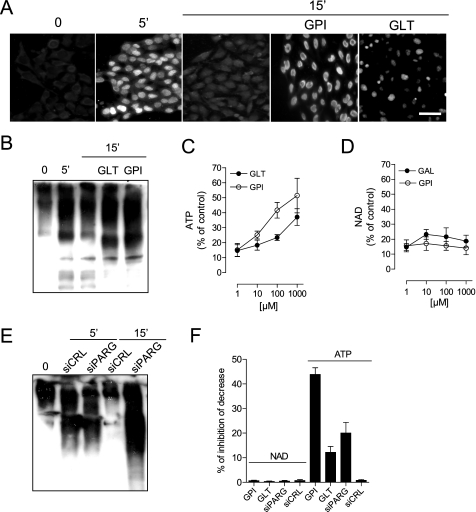FIGURE 2.
PARG activity contributes to ATP but not NAD depletion during PARP-1 hyperactivation. A and B, immunocytochemical detection (A) or Western blotting (B) of PAR by means of an antibody directed against the polymer. The effect of MNNG on PAR formation at 5 min and of the two PARG inhibitors GPI-16552 (GPI) and gallotannin (GLT) on PAR degradation at 15 min is shown. Note that poly(ADP-ribosyl)ated proteins appear as a smear due to their highly increased molecular weight. In A, bar = 20 μm. C and D, GPI-16552 and gallotannin (GAL) inhibit ATP (C) but not NAD (D) loss in cells exposed 60 min to MNNG. E, effect of control siRNA (siCRL) and PARG siRNA (siPARG) on PAR contents in cells exposed 5 and 15 min to MNNG. F, effects of PARG inhibitors GPI-16552 and gallotannin as well as PARG siRNA on NAD and ATP contents in cells exposed 30 min to MNNG. Bars/points represent the mean ± S.E. of at least three experiments conducted in duplicate.

